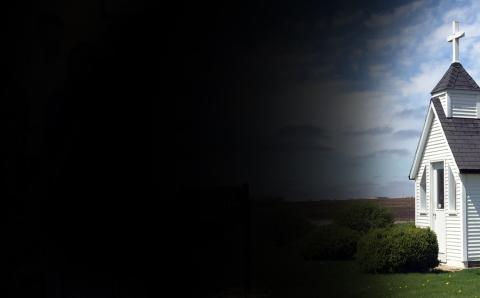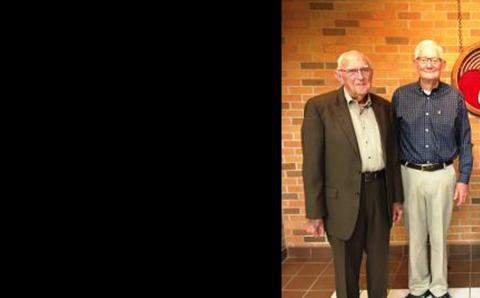“And who is my neighbor?” (Luke 10:29).
This question, which becomes the impetus for the parable of the Good Samaritan, is perhaps even more relevant today than when it was first asked. The expert in the law who asked Jesus was concerned with fulfilling the law in a technical sense. But as Jesus’ response made clear, the man had very little interest in fulfilling the intent of the law.
The man knew that he had a God-given obligation to love his neighbor, but he thought that if he could define the concept of “neighbor” narrowly enough—say, someone who lives immediately next door—he could be exempt from the messy reality of actually caring for others.
Jesus turned this man’s query on its head by reminding him that the neighbor relationship is reciprocal. At the end of the parable, the one who is identified as neighbor is not the victim in need of help but the one who offers help. That is to say, loving my neighbor isn’t about who is or who is not my neighbor, but rather it’s about my willingness to engage with and perhaps help anyone with whom I interact on any given day.
Those in the parable who fail the “neighbor” test are those who choose to “pass by on the other side” rather than engage with the man in need. They see the man in need and they cross the street to avoid him.
Two millennia later, we who live in North America have created a more effective—albeit more subtle—strategy for avoiding our obligation to act neighborly toward our fellow citizens. And it’s a strategy we might not even be aware of.
Inhospitable Neighborhoods
This strategy involves a few simple steps. First, design a society that encourages everyone to remain hermetically sealed in their automobiles when traveling from point A to point B. Second, allow most people to access their homes directly from their cars through enclosed garages. And third, orient private residences toward the back of their property and encourage everyone to spend all of their discretionary time at home either inside the house or in the backyard.
These simple steps make it easy for people to virtually eliminate contact with strangers in their day-to-day life. And if we can eliminate contact with strangers, we can absolve ourselves from any pesky obligation that we may feel from God to act neighborly toward anyone we don’t already know. But as was the case with the expert in the law who asked Jesus about his neighbor, such logic bears little connection to what God actually requires of us.
During the second half of the 20th century, North America developed a cultural habit for creating what I call “inhospitable neighborhoods”—those that have been designed to keep residents insulated from direct contact with strangers or anyone outside of one’s circle of friends and family.
Not everyone who happens to live in an inhospitable neighborhood is motivated to shun the stranger. In fact, many people who live in these kinds of neighborhoods, motivated by Christian conviction or otherwise, would gladly help a stranger in need. But in reality, the way their neighborhood is designed makes it more difficult to have meaningful engagement with others outside of their homes.
Fortunately, inhospitable neighborhoods are not the only type of neighborhood in North America. Lots of neighborhoods built prior to World War II are significantly more hospitable. And today there is a lot of new interest around building more hospitable neighborhoods in urban areas.
Hospitable neighborhoods provide opportunities for strangers to become familiar with one another. And they encourage new relationships—even friendships—to be formed.
Hospitable Places to Hang Out
Three attributes that can have a significant impact on the hospitality of a neighborhood include “third places,” walkability, and sociable front yards.
We’ll start by looking at the role of “third place” in a neighborhood. This term was coined by Roy Oldenburg in his book The Great Good Place: Cafés, Coffee Shops, Community Centers, Beauty Parlors, General Stores, Bars, Hangouts, and How They Get You through the Day to describe a neighborhood hangout spot. The idea is that our homes function as our “first place,” and, for many of us, our places of work function as our “second place.” Homes and places of work are necessary and good, but they also may bring us stress because of the obligations that we find housed within them. The “third place” is a relaxing place where we can spend time releasing some of the pressure that builds up in our first and second places.
Third places—coffee shops, pubs, barber shops, corner groceries, to name a few—are open to everyone, but no one is obligated to be there at any particular time. They exist in urban and rural environments. But whatever form they take, third places provide opportunities for us to get to know our neighbors and visitors to our neighborhood a little better.
We don’t even have to explicitly interact with another person to gain some familiarity with them at a third place. For instance, we might know someone only as “the man who sits at that corner table with a bagel and a journal most mornings,” but even that makes a stranger feel less threatening to us in our neighborhood.
Third places can also play a vital role in fostering new friendships in a neighborhood. While inviting someone into your home for the first time can represent a significant risk for both parties involved, sharing a table at a local coffee shop to discuss last night’s game is a much easier way to get a relationship started.
As many of us discover in adulthood, it can be difficult to see friends as often as we would like to. Finding a time that works on both calendars is a challenge, and even when we can find a time, the hassle of cleaning our home for company can discourage us from taking the initiative to invite someone over. But in the context of a chance meeting at the corner grocery store, we can have short conversations with our neighbors on an almost daily basis.
Hospitable Streets
A second attribute that can help make a neighborhood more hospitable is the existence of streets that encourage people to walk for recreation and transportation. During the latter half of the 20th century, streets were built primarily for the purpose of moving cars quickly and efficiently. And while many of these streets included places for pedestrians, they were generally not the kinds of places that anyone who had any other options would choose to walk. Picture a seemingly endless sidewalk with a parking lot fronting a strip mall on one side and an eight-lane arterial on the other, with no trees to offer protection from the elements or amenities such as benches to offer a place of rest.
Fortunately, it’s not too difficult to make a street walkable. Prior to the advent of automobile-oriented development, walkability was an implied goal in the multiple decisions involved in developing a town. And it is making a significant comeback today. Walkability is a simple function of enclosure, visual interest, and meaningful destinations.
Enclosure has to do with the feeling of shelter that we get from the buildings that flank the streets. It feels a bit like walking in an outdoor hallway and can be achieved on a variety of scales: from the main street in a typical small town to a street of residential brownstones in midtown Manhattan. A relatively wide residential street flanked by single-family homes can achieve a sense of enclosure through a well-placed line of street trees. What kills enclosure are streets that are too wide (think multi-lane arterials) and buildings that are too low (single-story strip malls). The scale of generic big box retail clusters with oceanic parking lots also fails to achieve enclosure.
Visual interest is enhanced by a streetscape that offers lots of things to engage the eye of pedestrians—such as interesting textures and architectural features of buildings as well as benches, lampposts, and planting strips. But the most effective kind of visual involves watching other people. Retail stores with windows and doors that come right up to the sidewalk add a lot of visual interest, as do restaurants and cafes that include windows that open to the outside.
It is very important to gauge visual interest at the pedestrian level. An iconic building or the tall buildings that contribute to a city’s impressive skyline often don’t offer much visual interest at the pedestrian level. But it is the way parking is handled that can have the most negative impact on visual interest. Stores that are set back from the sidewalk with parking lots in front offer very little for the pedestrian to look at. And large parking garages that span an entire block provide a particularly dreary view. Unfortunately, these kinds of parking strategies are often not only allowed but mandated by city ordinances.
Finally, walkability has to do with the presence of meaningful destinations. Consider the variety of things you could access within a five-minute walk from your front door. In some neighborhoods you could buy groceries, visit a library, get a haircut, play in a park, eat lunch, or worship at a church. In other neighborhoods there are only other single-family residences within a five-minute walk. People do walk for exercise in such neighborhoods. However, in neighborhoods that do contain meaningful destinations, walking tends to be much more common and is done by people of all ages—from babies being pushed in strollers to senior citizens out to pick up a newspaper.
Hospitable Front Yards
A third feature that contributes toward making neighborhoods hospitable is the sociability of the front yard. In certain areas, usually older neighborhoods, the front yard used to be a very social space. The tradition of sitting on the front porch in the evening and greeting neighbors who were out for an evening stroll provided an easy way to strengthen the bonds of community and to encourage relationship building.
With the growing popularity of air conditioning and television in private households, this tradition declined considerably throughout the 20th century. And during the second half of that century, suburban houses began to be built with an orientation toward the backyard rather than the front. The houses looked nice from the front, but families began spending more time inside and in the backyard instead of on the front porch.
These changes made it considerably more difficult for a stranger to comfortably interact with a resident of a particular household. In the typical North American home, a stranger has to cross over someone’s property line, walk down a long pathway, and then knock on a door before they encounter the homeowner—during which the homeowner makes a quick assessment of the person at her door: is this a friend or a stranger? If it is a friend, the person is invited in. If it is a stranger, the question quickly becomes, “What do you want?” The assumption is that the stranger is trying to sell something or enlist the resident in some cause.
The North American front door can be considered a threshold where we distinguish friend from stranger. It does not lend itself to be a place where new friendships can reasonably be formed. But it is possible to create a much more hospitable front yard simply by shifting the location of the threshold.
James Rojas demonstrated this through a study of Mexican American homeowners in East Los Angeles (“The Enacted Environment: The Creation of ‘Place’ by Mexicans and Mexican Americans in East Los Angeles”). The residents he studied had moved into typical American homes with manicured lawns in the front and a backyard orientation. But rather than keeping their homes this way, they altered them by putting a low fence in the front yard and installing a gate.
By clearly defining a boundary for the front yard, residents created what Rojas calls “defensible space” and used this space as an extension of their living rooms. In these homes, the threshold was moved from the front door to the front gate. And by making that change, these residents of East Los Angeles created a very complex and effective social space in their front yards. Depending on their mood, residents could use their front yard in different ways. If they’re open to some public interaction, they can hang out near the front of the yard or even lean on the front gate. If they want to engage in a little chat with a neighbor, they can lean against the side fence.
If it’s true that the hospitability of a neighborhood has to do with how easy it is to form new relationships or strengthen existing relationships, then it’s clear that there is a wide range of hospitability among the neighborhoods we live in.
And while the effective hospitability of a neighborhood ultimately depends on the hospitality of its residents, factors like third places, walkability, and sociable front yards all have a place in fostering hospitable neighborhoods. The policies are being debated with increasing frequency within municipalities and homeowners’ associations around North America. But whether you happen to live in a hospitable neighborhood or not, being a good neighbor has everything to do with your willingness to engage those on “the outside.”
So who is your neighbor? According to Jesus, your neighbor includes the people who live next door as well as those who pass through your neighborhood. The real question for each of us, though, has to do with what kind of a neighbor you are to them. Do you really know who they are? Do you know their name? Do you know a few things about them? If so, well done. You are following God’s will for your life. If you don’t know these things, take note of the people in your area who are acting neighborly. And then “go and do likewise” (Luke 10:37).
Discussion Questions
- How many strangers do you typically converse with during the course of a typical work day? How important do you think it is to do so?
- Describe the neighborhood you live in. Based on the article’s insights, how well does your neighborhood lend itself to developing connections with your neighbors?
- Do you have a “third place” where you can spend time away from home and work? Where is it, and how does it help you to connect with your neighbors?
- What are some things you can do to be more intentional about being a good neighbor?
- Why do you suppose Jesus cares so much about loving our neighbors?
About the Author
Eric O. Jacobsen is a pastor at First Presbyterian Church, Tacoma, Wash., where he lives with his wife and four children. He is the author of The Space Between: A Christian Engagement with the Built Environment (Baker Academic, 2012).









